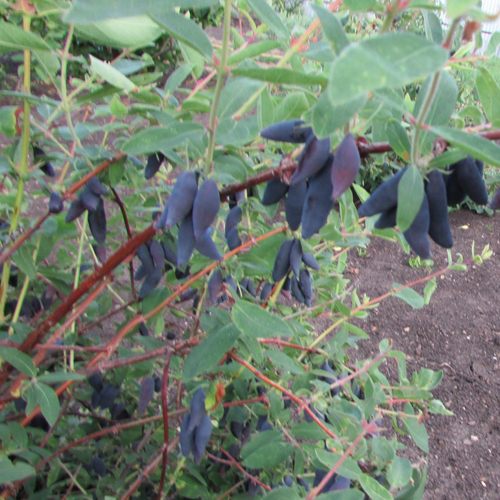Honeysuckle variety Lenita
Honeysuckle is good not only as an ornamental flowering plant. There are varieties, the berries of which are quite edible. One of them is called Lenita. The variety was registered a long time ago - in 1994. Since then, it has been considered one of the best in the collection of the South Ural Research Institute of Horticulture and Potato Growing. It was entered into the State Register of Breeding Achievements of the Russian Federation in 1999.
Appearance
A bush of great vigor, dense, with a hanging top. Thin and long shoots of a reddish tint are slightly curved, making the plant medium spreading. Leaves of medium size, green. The plate is slightly convex, glabrous, smooth. The flowers are small, pale-colored.

Honeysuckle berries are very large, with an average weight of 1 gram. But often fruits weighing 1.5 - 2 g ripen. The shape is elongated-oval. The skin is dense, smooth, blue with a bluish bloom. The taste of the South Ural variety is sweet, with a refreshing effect, slight sourness and light astringency. The tasters rate it very highly - 5 points.
Lenita fruits are not only tasty, but also healthy. They contain 7.6% sugar, 1.9% acid, 32 mg /% vitamin C, 1150 mg /% P-active compounds. Fresh consumption helps to strengthen the walls of blood vessels and prevents the development of atherosclerosis.
Characteristics
The set of qualities that distinguish this berry are very weight:
- fruits ripen in medium or medium late terms, depending on climatic conditions. Maturation occurs evenly and amicably;
- the variety is not prone to shedding, suitable for mechanical harvesting;
- the yield is very high, especially in favorable years and with good care. On average, 27 kg / ha are harvested;
- honeysuckle Lenit is very winter-hardy. Even flowers can withstand frosts down to -5 and even -7 ° C. The State Register notes that the plant was not damaged by winter frosts;
- originators indicate good disease resistance. This culture has no pests;
- a tasty harvest is healthier to eat in its natural form. But you can also start up it for processing. In winter, it will be very useful to pamper yourself and your family with delicious compote or jam.
The culture withstands partial shade, but does not like windy areas. The rules of care are very simple - loosening, weeding and timely watering. Old shrubs can be rejuvenated by pruning. The cultivar is partially self-fertile and needs pollinators. A better crop will help bring a nearby honeysuckle bush Long-fruited.
Among the advantages, it is also worth noting easy reproduction using cuttings, unpretentiousness to weather conditions, the ability to grow in different regions of Russia.








